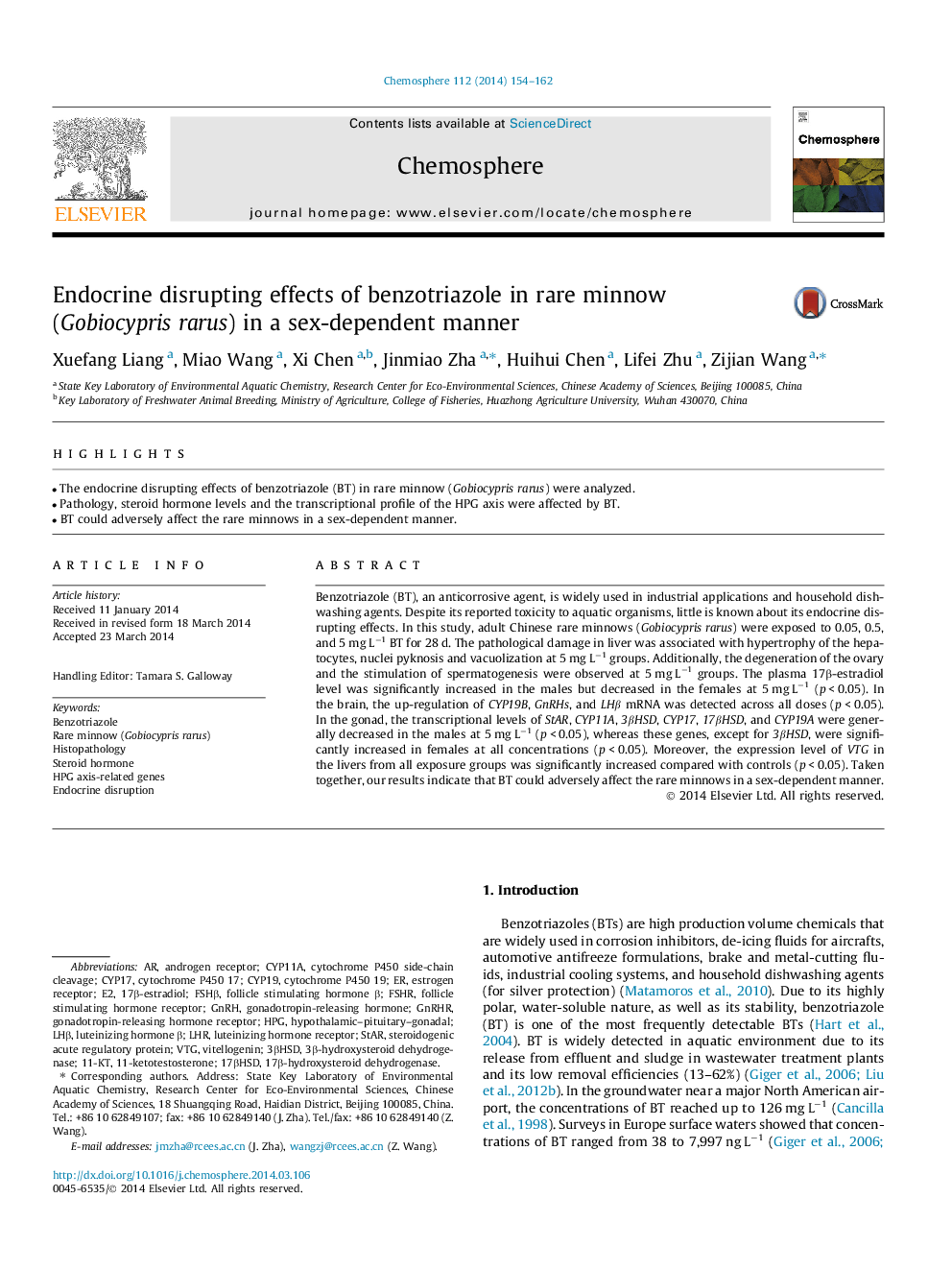| Article ID | Journal | Published Year | Pages | File Type |
|---|---|---|---|---|
| 6308781 | Chemosphere | 2014 | 9 Pages |
Abstract
Benzotriazole (BT), an anticorrosive agent, is widely used in industrial applications and household dishwashing agents. Despite its reported toxicity to aquatic organisms, little is known about its endocrine disrupting effects. In this study, adult Chinese rare minnows (Gobiocypris rarus) were exposed to 0.05, 0.5, and 5 mg Lâ1 BT for 28 d. The pathological damage in liver was associated with hypertrophy of the hepatocytes, nuclei pyknosis and vacuolization at 5 mg Lâ1 groups. Additionally, the degeneration of the ovary and the stimulation of spermatogenesis were observed at 5 mg Lâ1 groups. The plasma 17β-estradiol level was significantly increased in the males but decreased in the females at 5 mg Lâ1 (p < 0.05). In the brain, the up-regulation of CYP19B, GnRHs, and LHβ mRNA was detected across all doses (p < 0.05). In the gonad, the transcriptional levels of StAR, CYP11A, 3βHSD, CYP17, 17βHSD, and CYP19A were generally decreased in the males at 5 mg Lâ1 (p < 0.05), whereas these genes, except for 3βHSD, were significantly increased in females at all concentrations (p < 0.05). Moreover, the expression level of VTG in the livers from all exposure groups was significantly increased compared with controls (p < 0.05). Taken together, our results indicate that BT could adversely affect the rare minnows in a sex-dependent manner.
Keywords
FSHR17βHSDlhβGnRHCytochrome p450 side-chain cleavageFSHβ3βHSDCYP19cytochrome P450 17CYP11A11-KTLHR17β-Hydroxysteroid dehydrogenase3β-Hydroxysteroid dehydrogenaseGnRHRHPGCYP17Vitellogenin11-ketotestosterone17β-estradiolRare minnow (Gobiocypris rarus)Endocrine disruptionBenzotriazoleStarGonadotropin-releasing hormoneSteroid hormoneHistopathologyhypothalamic–pituitary–gonadalvtgSteroidogenic acute regulatory proteinAndrogen ReceptorEstrogen receptorgonadotropin-releasing hormone receptorFollicle stimulating hormone receptorLuteinizing hormone receptor
Related Topics
Life Sciences
Environmental Science
Environmental Chemistry
Authors
Xuefang Liang, Miao Wang, Xi Chen, Jinmiao Zha, Huihui Chen, Lifei Zhu, Zijian Wang,
